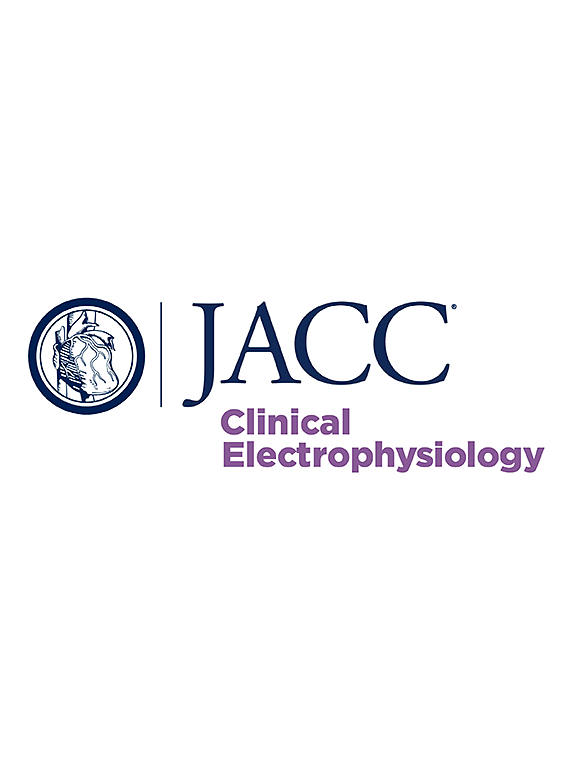Linear Ablation at the Mitral Isthmus Following Mitral Valve Surgery
IF 7.7
1区 医学
Q1 CARDIAC & CARDIOVASCULAR SYSTEMS
引用次数: 0
Abstract
Background
Creating conduction block along the mitral isthmus can be challenging because of anatomical factors. Ethanol infusion into the vein of Marshall (EIVOM) effectively facilitates this process. Patients with prior mitral valve surgery are at high risk for atrial fibrillation and atrial tachycardia. The feasibility and outcomes of EIVOM and mitral isthmus ablation in these patients remain unclear.
Objectives
The aim of this study was to evaluate the feasibility, safety, and durability of EIVOM and mitral isthmus ablation in patients with prior mitral valve surgery.
Methods
Consecutive mitral valve–operated patients undergoing EIVOM and mitral isthmus ablation were retrospectively included. Feasibility and outcomes were evaluated and compared with a propensity score–matched control group.
Results
The study group had a mean age of 64 ± 12 years and a mean left atrial volume index of 56 ± 18 mL/m2; 53.7% of patients were male. Patients with mitral valve replacement (74.1%), 52.5% of whom received mechanical valves, were included. EIVOM was successful in 92.6% of patients, with the acute mitral isthmus block achieved in 88.9% of patients. Propensity-weighted analysis with a control group of patients with no history of mitral valve surgery (n = 72) showed similar EIVOM success rates between groups (91.5% vs 91.7%; P = 0.76) and comparable VOM dissection rates (6.4% vs 1.4%; P = 0.30). The proportion of acutely unblocked mitral isthmus was higher in the study group (12.8% vs 5.5%; P = 0.073). Freedom from atrial tachycardia/atrial fibrillation at 1 year was not statistically different (55.3% vs 73.6%; P = 0.12).
Conclusions
EIVOM and mitral isthmus ablation are feasible and acutely successful after mitral valve surgery.
二尖瓣手术后二尖瓣峡部线性消融。
背景:由于解剖学因素,沿二尖瓣峡部制造传导阻滞是具有挑战性的。乙醇注入马歇尔静脉(EIVOM)有效地促进了这一过程。有二尖瓣手术史的患者发生房颤和房性心动过速的风险较高。EIVOM和二尖瓣峡部消融在这些患者中的可行性和结果尚不清楚。目的:本研究的目的是评估EIVOM和二尖瓣峡部消融在既往二尖瓣手术患者中的可行性、安全性和持久性。方法:回顾性分析连续二尖瓣手术行EIVOM和二尖瓣峡部消融的患者。评估可行性和结果,并与倾向评分匹配的对照组进行比较。结果:研究组平均年龄64±12岁,平均左房容积指数56±18 mL/m2;男性占53.7%。纳入二尖瓣置换术患者(74.1%),其中52.5%接受机械瓣膜。EIVOM的成功率为92.6%,急性二尖瓣峡部阻断的成功率为88.9%。与没有二尖瓣手术史的对照组(n = 72)的倾向加权分析显示,两组之间的EIVOM成功率相似(91.5% vs 91.7%;P = 0.76)和相似的VOM解剖率(6.4% vs 1.4%;P = 0.30)。研究组急性二尖瓣通畅的比例更高(12.8% vs 5.5%;P = 0.073)。1年房颤/心动过速自由率无统计学差异(55.3% vs 73.6%;P = 0.12)。结论:EIVOM和二尖瓣峡部消融术在二尖瓣手术后是可行的和急性成功的。
本文章由计算机程序翻译,如有差异,请以英文原文为准。
求助全文
约1分钟内获得全文
求助全文
来源期刊

JACC. Clinical electrophysiology
CARDIAC & CARDIOVASCULAR SYSTEMS-
CiteScore
10.30
自引率
5.70%
发文量
250
期刊介绍:
JACC: Clinical Electrophysiology is one of a family of specialist journals launched by the renowned Journal of the American College of Cardiology (JACC). It encompasses all aspects of the epidemiology, pathogenesis, diagnosis and treatment of cardiac arrhythmias. Submissions of original research and state-of-the-art reviews from cardiology, cardiovascular surgery, neurology, outcomes research, and related fields are encouraged. Experimental and preclinical work that directly relates to diagnostic or therapeutic interventions are also encouraged. In general, case reports will not be considered for publication.
 求助内容:
求助内容: 应助结果提醒方式:
应助结果提醒方式:


